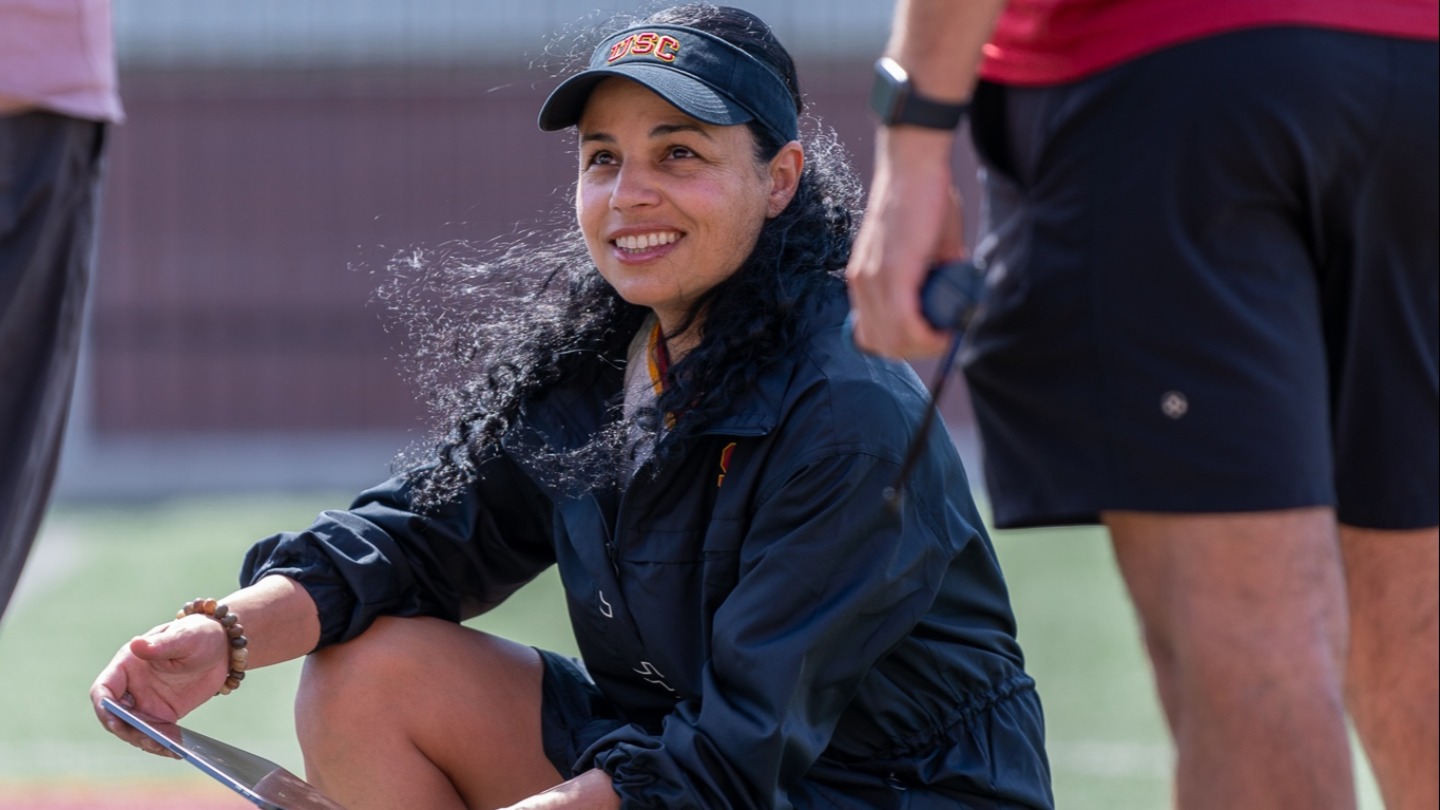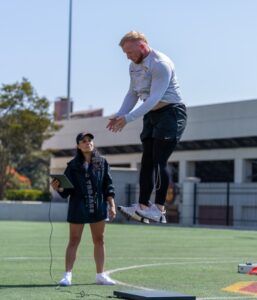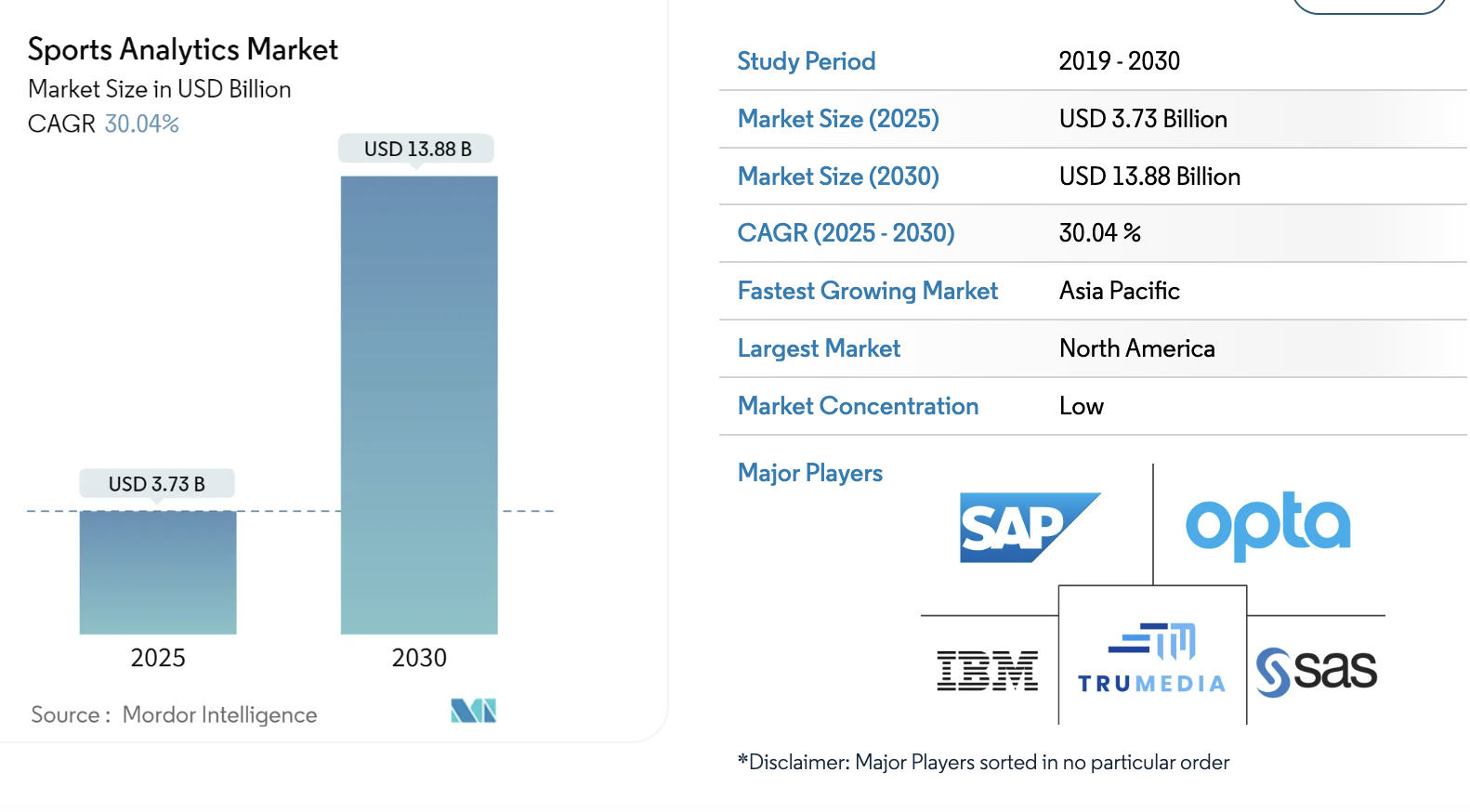Every athlete has asked it: “Can I still play?” It’s a question loaded with hope, uncertainty, and millions of dollars. But while coaches and fans look for yes or no, behind the curtain, there’s a growing class of sports analysts asking something else entirely: What does the data say?
Enter Lorena Martin—a former elite athlete turned powerhouse data scientist, who’s not just interpreting sports performance through numbers but teaching others to do it better. At USC’s Marshall School of Business, Martin is reshaping the future of sports with a fusion of biomechanics, machine learning, and a rare skill that can’t be coded: communication.
From Athlete to Analyst: Why Lorena Martin’s Approach Is Different

Let’s be honest—sports performance analytics has often been siloed. On one side, you have the athletes and coaches driven by feel, instinct, and tradition. On the other, you have the spreadsheet warriors crunching numbers in isolation. Martin bridges that divide.
Her background isn’t purely academic or technical—she’s lived the sport. That firsthand understanding gives her a sixth sense for what actually matters when translating data into real-world action. Her courses—DSO 499, 578, and 579—aren’t just about learning to code. They’re about learning to communicate meaningfully with impact.
Martin’s career also spans high-level roles with the Los Angeles Lakers, research for her published book on performance analytics, and work as a consultant for athletes and teams across multiple sports and continents. She’s walked the walk, and now she’s helping others carve their own path in a field where evidence meets instinct.
Teaching the Tools That Matter
Martin’s students don’t just study theoretical models. They get their hands on real tech—think EMG sensors that measure muscle activation, force plates for kinetic feedback, and motion sensors that detect micro-imbalances before they become injuries. Some of the featured tools include:
K-Grip and K-Myo: For assessing grip strength and neuromuscular activity.
Sparta Science force plates: An industry standard in tracking movement patterns.
Timing gates and K-Push/Pull: To analyze acceleration and isometric strength.
K-Move and K-Delta: For assessing balance, joint stability, and mobility in both upper and lower body segments.
These tools aren’t just flashy tech—they’re becoming essential for modern athlete monitoring. Whether it’s evaluating shoulder recovery in a pitcher or identifying asymmetries in a sprinter’s gait, this kind of hands-on assessment is redefining the baseline for what sports performance data can offer.
Real-Time Learning for Real-World Impact

Students in Martin’s courses engage in dynamic, project-based learning. They’re not stuck writing papers on theory—they’re analyzing real datasets, creating predictive models, and practicing how to deliver insights to people who might not understand a line of code.
And it’s not just about pro athletes. Students often run mock assessments on each other, testing jump heights, muscle response times, and reaction speeds using the very tools professionals rely on. These labs reinforce that good data isn’t just collected—it’s curated, contextualized, and communicated with purpose.
Teaching the Soft Skills of Hard Science
Martin knows that understanding data is just step one. The harder skill—and often the make-or-break factor—is how that data is communicated.
A coach doesn’t want a regression analysis. A player recovering from a hamstring strain doesn’t want an Excel chart. They want clarity. They want confidence. They want a path forward.
Martin teaches students when to distill insights into one or two clear sentences, when to hold back details to protect an athlete’s mindset, and when to go full tilt with the front office to influence big-ticket decisions.
She also emphasizes ethical decision-making—what data should be shared, what privacy needs to be honored, and how to avoid confirmation bias or cherry-picking results to please stakeholders. That nuance? It’s everything.
Machine Learning on the Move
Sports are entering their AI era, and Martin’s ahead of the curve. Her students are learning how to train and test machine learning models that can:
Predict injury risk with increasing accuracy.
Estimate an athlete’s recovery timeline.
Forecast performance decline before it’s noticeable.
Personalize nutrition or recovery strategies using wearable device data.
Python, R, public sports datasets—it’s all part of the curriculum. But she doesn’t pretend AI is perfect. Martin is clear-eyed about the risks: misinterpretation, bias, false positives. That’s why the real skill isn’t just building the algorithm. It’s knowing what to trust, when to question, and how to verify.
Integrating with the Broader Sports Business
Another strength of Martin’s program is how it places data science within the broader ecosystem of sports business. Athletes are not just competitors—they’re investments. Knowing when an athlete is ready to return isn’t just about safety; it’s about risk management, salary caps, and season strategy.
Martin’s students explore case studies that span marketing, contract negotiations, and brand value tied directly to an athlete’s performance trajectory. Data doesn’t live in a vacuum—it drives some of the biggest financial decisions in modern sports.
Why This All Matters Now
By 2029, the sports analytics industry is expected to reach $14 billion. That’s not just scoreboard stats—it’s sleep data, nutrition tracking, hydration logs, training load metrics, cognitive testing, and more.

Think about it: athletes are walking data ecosystems. And for high performers like LeBron or Brady, extending a career by even one season means tens of millions in revenue, not to mention legacy.
Martin’s mission? Help create more of those outcomes. Not through magic, but through mastery of modern performance science.
And as wearables become more accurate, and tech like continuous glucose monitors or infrared thermography enter mainstream use, the analysts who know how to make sense of it all will be worth their weight in gold.
Controversial Claims with Cold Logic
Martin’s not shy about making bold predictions—like Tom Brady having another comeback in him or LeBron James playing at an elite level well into his 40s.
Sounds wild? Sure.
But when you factor in muscle recovery scores, training adaptability, hormonal resilience, and mental game? It’s not so far-fetched. Martin doesn’t make these calls from a gut feeling. She does it through the lens of decades-worth of compiled data and AI modeling.
These aren’t fan takes. These are numbers talking.
It’s worth noting that this kind of modeling is gaining traction in pro sports war rooms. Whether it’s predicting minutes restrictions for aging players or identifying off-season training regimens with maximum ROI, predictive analytics is becoming a standard tool.
Redefining Longevity in Sports
It used to be that age 35 meant retirement in most pro sports. That’s changing. And not just because of better medicine. It’s because athletes today are tracking every variable imaginable—and adjusting before things go south.
Martin’s courses at USC don’t just teach students how to join that movement. They prepare them to lead it. Graduates aren’t just future analysts—they’re the future architects of sustainable sports careers.
And let’s be clear—this isn’t just for the superstars. Mid-level and even fringe athletes are beginning to understand that data could mean the difference between another contract or early retirement.
A Human Future for a Data-Driven Field
At the end of the day, Martin isn’t just teaching code and analysis. She’s teaching empathy. Because behind every dataset is a person—usually one whose entire career, confidence, and identity may hinge on the insight you offer.
She’s building analysts who respect that.
And that’s why she’s changing the game.
Final Thoughts: Data as a Bridge, Not a Barrier
What makes Martin’s work so impactful isn’t the tech itself—it’s the way she weaves it into human experience. The ability to explain a tendon’s recovery trajectory or a sprinter’s hamstring asymmetry in ways that change lives—not just lineups.
In a time when sports science risks becoming a buzzword or a gimmick, Martin’s program is grounded in reality: clear thinking, clear communication, and clear value.
So the next time an athlete asks, “Can I still play?” the answer won’t come from a hunch. It’ll come from data.
And from a new generation of professionals trained to read that data like it’s a second language.







